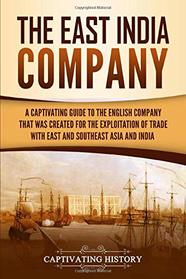The most interesting part of this book, to me, was the trade of tea, sugar, and opium. The English public wanted tea and sugar, so the EIC (East India Company) traded those goods for opium (that the Chinese government didn't want). Chinese merchants wouldn't buy any European goods except cotton and opium. Before long, wars were fought over the EIC dumping steady amounts of opium in China.
There's also an interesting chapter on the Company's army which was actually 3 different sections (Bengal, Bombay, and Madras). Through their efforts, the Company was the conqueror as well as the trading partner of the Indians.
In the early years, the EIC treated the natives' religion without interference. This is the way of most conquerors since ancient times in the Asian-Middle Eastern lands. When churches wanted to 'Christianize the heathens' the EIC tried to keep them away from the Hindi and Islamic population. Forced religious conversions engender civil unrest and rebellions. The EIC wanted no part of this. However, their 1813 charter forced them to allow missionaries into India.
The English treated the Indians as lesser beings and then allowed missionaries to try to convert the 'heathens.' At about the same time, the British government was coming to the conclusion that it should take over the Company in India.
This book offered a fine explanation of a complicated company in a very different time. How and why the EIC became powerful, what they did with their power and how they were finally brought down is all included. Additionally, the author explains how the company changed things then and in the years to follow.
There's also an interesting chapter on the Company's army which was actually 3 different sections (Bengal, Bombay, and Madras). Through their efforts, the Company was the conqueror as well as the trading partner of the Indians.
In the early years, the EIC treated the natives' religion without interference. This is the way of most conquerors since ancient times in the Asian-Middle Eastern lands. When churches wanted to 'Christianize the heathens' the EIC tried to keep them away from the Hindi and Islamic population. Forced religious conversions engender civil unrest and rebellions. The EIC wanted no part of this. However, their 1813 charter forced them to allow missionaries into India.
The English treated the Indians as lesser beings and then allowed missionaries to try to convert the 'heathens.' At about the same time, the British government was coming to the conclusion that it should take over the Company in India.
This book offered a fine explanation of a complicated company in a very different time. How and why the EIC became powerful, what they did with their power and how they were finally brought down is all included. Additionally, the author explains how the company changed things then and in the years to follow.




